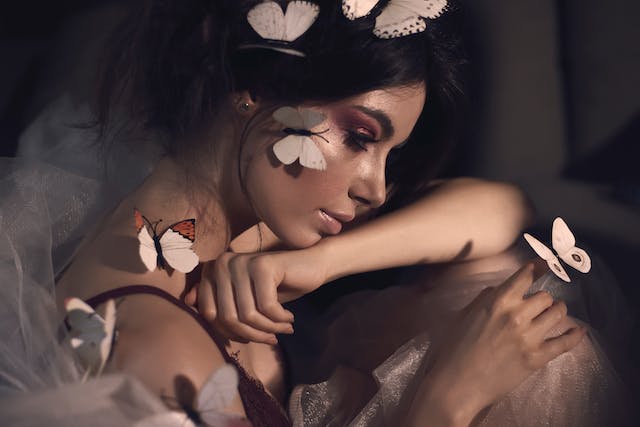Discover the Joy of Drawing Portraits and Capturing Emotions on Paper
Posted on 24-12-2023 10:20 πμ

Portrait drawing is a timeless art form that has been practiced for centuries. It's an excellent way to capture someone's personality, emotions, and character on paper. Whether you're just starting or have some experience with portrait drawing, this article will help you discover the joy of creating portraits and capturing emotions on paper.
The Art of Capturing Emotions on Paper - Portrait zeichnen lassen
Capturing emotions in your drawings can be challenging, but it also makes portrait drawing so rewarding. To capture emotions effectively, you must understand how they manifest themselves physically. For example, sadness might appear as drooping eyelids or a downturned mouth, while happiness could be expressed through a smile or uplifted eyes. By studying these physical cues, you can create a more accurate and expressive depiction of the subject's emotional state.
Tips and Tricks for Drawing Realistic Portraits
Drawing realistic portraits requires attention to detail and a good understanding of proportion and perspective. Here are some tips and tricks to help you achieve realism in your drawings:
Use reference photos to get started. This will help you accurately capture the subject's features and proportions.
Start by sketching the basic shapes of the face, such as the forehead, nose, and chin.
Pay close attention to the placement of the eyes, nose, and mouth. These features should be aligned correctly to create a balanced and symmetrical composition.
Use value to create depth and dimension. Shading can help define the shape of the face and add volume to the features.
How to Create a Perfect Portrait with Depth and Character
Creating a perfect portrait involves more than just getting the likeness right. You want to capture the subject's essence and convey their unique character and personality. Here are some steps to follow when creating a portrait with depth and character:
Start by establishing the overall tone and mood of the piece. This can be achieved through color, lighting, and composition.
Focus on capturing the subtle nuances of the subject's expression. This might include slight movements of the mouth or changes in eye contact.
Use negative space to your advantage. The areas around the subject can help emphasize certain aspects of their appearance or personality.
Don't forget about the background. A well-chosen backdrop can enhance the overall impact of the portrait and provide context for the subject.
Conclusion
Drawing portraits can be a profoundly satisfying and rewarding experience. With practice and patience, anyone can learn to capture the beauty and emotion of the human face on paper. So grab your pencils and start exploring the joy of drawing portraits today!
Everything You Need to Know About Portrait Drawing, Explained Here
Portrait drawing is a timeless art form that has been practiced for centuries. It involves capturing the likeness of an individual on paper or canvas using various techniques and mediums such as pencils, charcoal, pastels, and oil paints. In this blog post, we will explore everything you need to know about portrait drawing, including its importance, proportion, and symmetry, understanding light and shadow, capturing personality, common mistakes to avoid, and final tips for successful portrait drawing.
Introduction to Portrait Drawing
Portrait drawing is not just about copying what you see in front of you. It requires skill, technique, and creativity to capture the essence of a subject's character and personality. First, you need to understand the basic principles of drawing, such as perspective, composition, and value. You must also grasp human anatomy and facial features well to create accurate and realistic portraits.
The Importance of Proportion and Symmetry in Portrait Drawing
Proportion and symmetry are essential elements of portrait drawing. The entire drawing can look distorted and unnatural if these aspects are incorrect. When drawing a portrait, it's crucial to accurately measure the distances between different parts of the face, such as the distance between the eyes, nose, mouth, and ears. Using grids and guidelines can help you maintain accuracy and balance in your drawings.
Understanding Light and Shadow in Portrait Drawing
Light and shadow play a significant role in creating depth and dimension in portrait drawing. Observing how light falls on the subject's face allows you to create highlights and shadows that add volume and texture to the drawing. Understanding the direction and intensity of the light source is critical when drawing portraits. You should also consider the quality of light, whether soft or harsh, to achieve the desired effect.
Capturing the Essence of a Subject's Personality in Portrait Drawing
To capture the essence of a subject's personality, you must observe their facial expressions, body language, and overall demeanor. Pay attention to details like wrinkles, scars, and moles, which can reveal much about a person's character. Use your imagination and creativity to interpret these observations into your drawing. Experiment with different styles and techniques until you find one that suits your subject best.
Common Mistakes to Avoid When Drawing Portraits
As a beginner, you may encounter several challenges while drawing portraits. One of the most common mistakes is focusing too much on the details rather than the big picture. Another mistake is neglecting the importance of proportion and symmetry, leading to distortions in the drawing. Failing to observe the light and shadow patterns correctly can result in flat and lifeless portraits.
Conclusion: Final Tips for Successful Portrait Drawing
In conclusion, portrait drawing requires practice, dedication, and perseverance. Keep experimenting with different techniques and mediums until you find what works best. Don't be afraid to make mistakes because they are integral to the learning process. Finally, always strive to capture your subjects' unique personalities and characters to create genuinely memorable portraits.